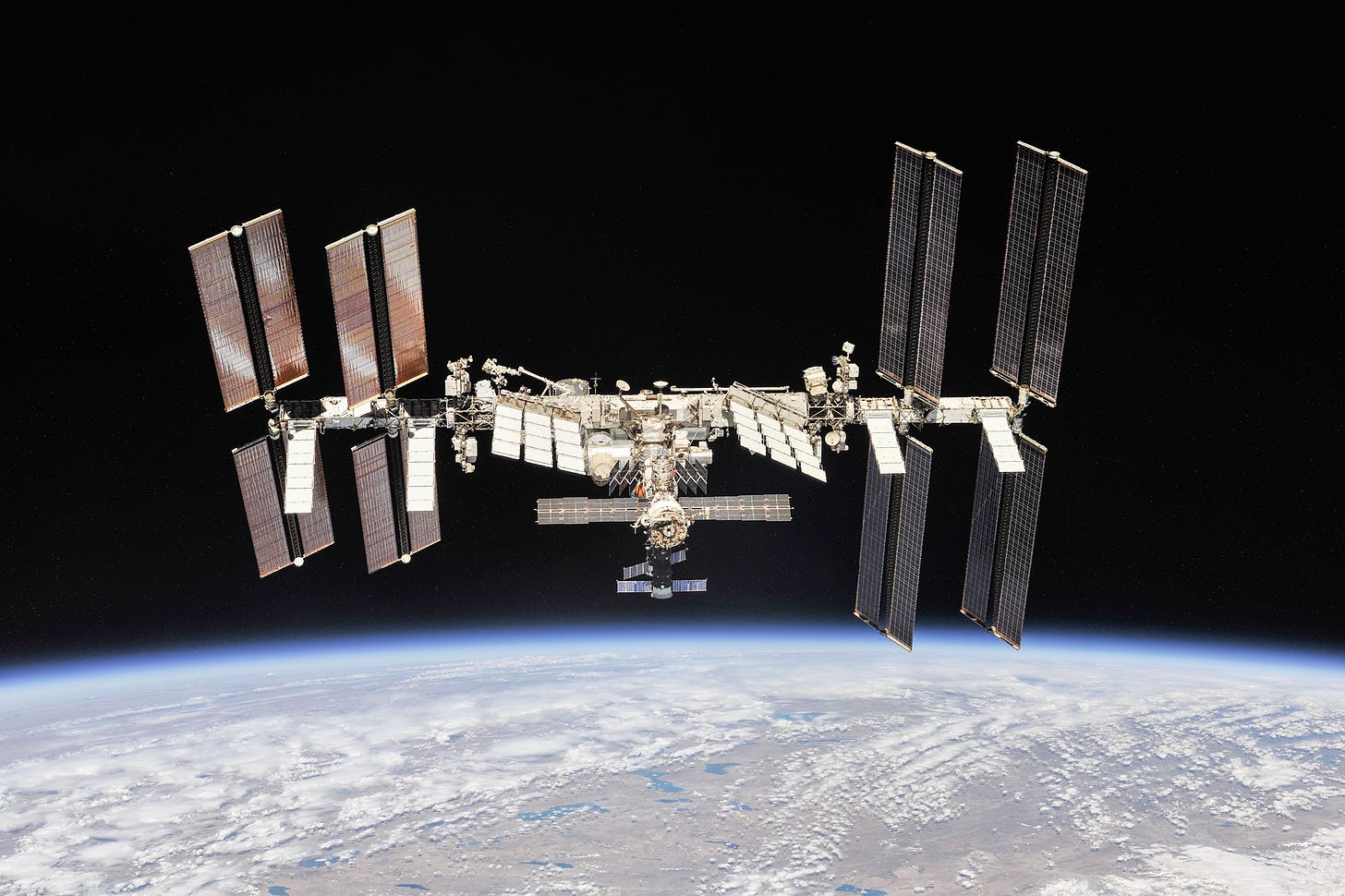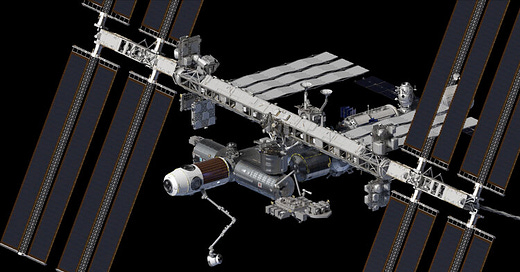
It's FREE! Take a moment to subscribe to Full Throttle which will be sent to your email inbox twice a week. I update during the week on Facebook, Instagram, Twitter, and LinkedIn.
October 31, 2021
The International Space Station (ISS) was supposed to be preparing for a new crew on Halloween. Instead, high winds have delayed the Crew-3 launch. The three Nasa astronauts and one European astronaut are now scheduled to ride a SpaceX Dragon capsule to the ISS early Wednesday. Three are rookies, taking the number of humans who have been to space past 600.

Dress rehearsal for NASA's Crew-3 at the Kennedy Space Center. (Credit: NASA)
That number is expected to multiply significantly by the end of this decade even as the ISS nears retirement.
The ISS is now more than two decades old and showing its age. NASA, Russia, and other partners have extended the life of the orbiting lab, but a replacement will be needed. However, NASA will be getting out of the business of building low earth orbit (LEO) stations as Congress has ordered.

The orbiting International Space Station. (Credit: NASA)
COMMERCIALIZE SPACE
NASA has set up a program in which it will help develop and fund those private stations. NASA will then become a paying customer. The space agency will buy flights to these stations and pay for housing of NASA astronauts onboard. This is all part of the effort to commercialize LEO.
It’s called the Commercial LEO Destinations Project. It follows the playbook NASA used to help SpaceX develop its reusable rocket and capsule to carry astronauts, like Crew-3, to the ISS (that’s right, you the taxpayer, helped fund the Falcon-9 and Dragon capsule). NASA says it will, “stimulate U.S. private industry development of free-flying orbital destination capabilities and create a market environment in which commercial LEO destinations services are available to both Government and private-sector customers.”
THREE SO FAR
It’s working. There are now three separate efforts to build a private laboratory/factory/hotel in space.
Orbital Reef produced video of its proposed commercial space station. (Credit: Orbital Reef/Blue Origin)
ORBITAL REEF
A proposed space station called Orbital Reef is the latest to make waves. This is Jeff Bezos’s Blue Origin space company joining forces with Sierra Space as the leads. Both have been disappointed in the past few years by NASA. Blue Origin lost out on the bid for a lunar lander (it’s appealing the loss of that contract) and Sierra Space bid to carry astronauts to the station was rejected. Sierra pivoted and turned its mini shuttle-like craft into a cargo vehicle. The company undoubtedly hopes to convert the Dream Chaser into a human-rated spacecraft.

Artist rendering of Sierra Space vehicle called Dream Chaser. (Credit: Sierra Space)
Boeing and Redwire, a space manufacturing company, have joined the Orbital Reef effort. They call their Orbital Reef a business park in space.
THE STATION

Axiom infographic of its plans to build a commercial space station. (Credit: Axiom)
The first starter in this space is Axiom. One of its co-founders was a long-time manager for the ISS. The company is already developing modules that will attach to the ISS. That is just a start toward the goal of building its own station. The company is making headlines in other ways. It will fly the first private crew to the ISS. The mission, dubbed Axiom-1, will use SpaceX hardware to get to the ISS. Axiom has also been in the news because it was hoping to take Tom Cruise to the ISS to make a movie. Russia beat them to that!

Artist rendering of possible interior of Axiom commercial space station module. (Credit: Axiom)
STARLAB
The third entry is a company called Nanoracks, a contractor on the ISS, that has announced its intention to build Starlab. The company has partnered with Lockheed Martin, which is slated to build the inflatable module which serves as the core of Starlab. This station would house a continuous crew of four.
Nanoracks produced video of its planned commercial space station. (Credit: Nanoracks)
Press releases don’t always equal hardware in space. However, it appears there will be a lot more places to park a spacecraft and live in LEO by the time your 10-year old goes to college.




